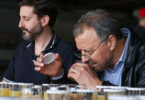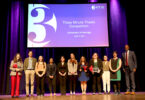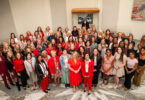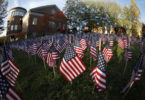Athens, Ga. – The newly released issue of The Georgia Review includes work by four recipients of the Pulitzer Prize and several contributors-including the author of the lead piece-who have yet to publish a book. The University of Georgia-based quarterly publication’s Fall 2008 issue delivers on it’s longstanding promise to offer its readers “the best of contemporary thought and writing, whether from Nobel laureates and Pulitzer Prize winners or from emerging and first-time authors.”
Robert Lowell and Elizabeth Bishop, close friends, Pulitzer Prize winners and two of the most acclaimed American poets from the middle decades of the twentieth century, are represented by a selection of their voluminous correspondence.
Edward J. Larson, who won the 1998 Pulitzer in history for his Summer for the Gods: The Scopes Trial and America’s Continuing Debate over Science and Religion, is featured with a new essay that examines the last days of George Washington and the ways his untimely passing influenced the presidential election of 1800-and, in all likelihood, the United States’ political climate and structure thereafter.
Stephen Dunn, winner of the 2001 Pulitzer Prize in poetry, offers up an essay comparing his primary art and that of architecture. In “Forms and Structures” Dunn argues that “the imagination plays a large role in the creation of structures or forms,” and that “the stronger the artist, the more he or she is able to accommodate the unruly, the serendipitous, the discordant-in a sense, the unmanageable-and to create for them a livable environment.”
The issue opens with Rebecca Emlinger Roberts’ essay “The Art of Looking Down,” a remarkable personal study of the intersection between aesthetics and the human body. Roberts, afflicted with rheumatoid for forty years, examines in detail the ways her creative vision has been shaped by the literal contours of her physical frame: “I have learned-after years of rheumatoid-induced joint erosions, after replacements of both hips and knees in surgeries stitching up but never quite replacing the precision of the originals, and after years of falling-the art of looking at the ground.”
Other issue highlights include a striking portfolio of paintings by London-born Judy Pfaff, poems by Albert Goldbarth and Lola Haskins, Gerald Weales’s thirty-first annual “American Theater Watch,” and James Terry’s short story “The Wildcat Massacre,” a strange football-based frolic that begins with this sentence: “It had been nearly a century since anything of the sort had happened in the area when the defensive line of the Deming Wildcats, celebrating their victory over the Silver City Fighting Colts in the opening game of the district 3-AAA playoffs, were caught unawares in the dry, sandy bed of the Mimbres River and massacred by Apache warriors.”
The Georgia Review, winner of National Magazine Awards for both fiction and essays, has been called by novelist Terry Kay “The best literary publication in America, period.”
For more information, see http://www.uga.edu/garev.







